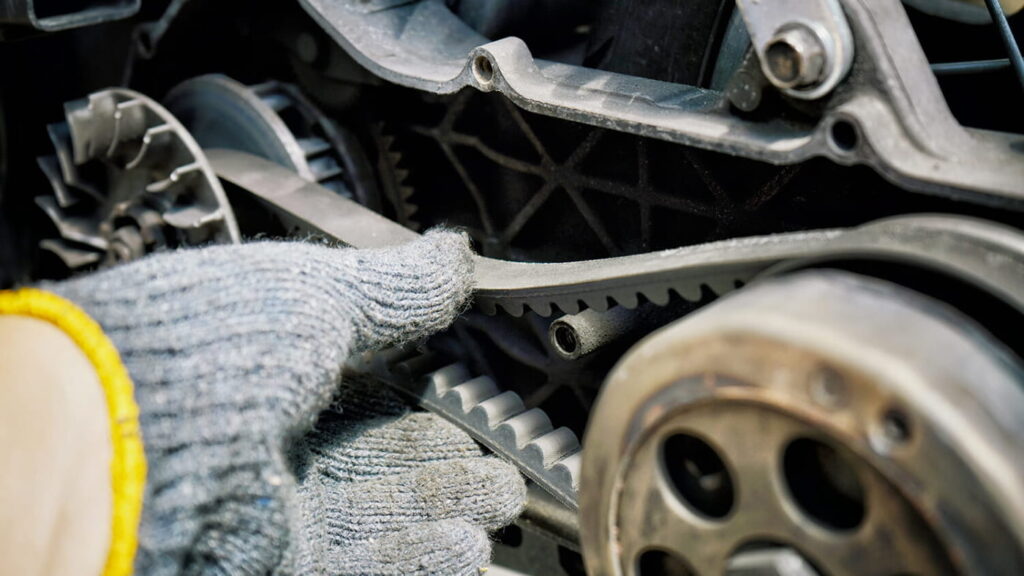There are two belts you need to be familiar with when talking about car maintenance — the serpentine belt and the timing belt.
The serpentine belt winds through your engine and carries power to several key components, including the alternator, air conditioning, and power steering pump. In some cars, the serpentine belt is also connected to the water pump.
The timing belt, meanwhile, synchronizes the actions of your camshaft and crankshaft. What that means is that it keeps all your engine valves working harmoniously, and it ensures that your engine functions as intended.
Maintaining the serpentine belts and fan belts in your car is vitally important to the overall health of your vehicle. Should any of these belts fail, it could result in extreme damage to your engine, your alternator, and your power steering pump. In other words, failure to have your belts replaced in a timely manner could result in much more onerous and expensive repair needs.
When to Replace Your Belts
As for when you need to replace these belts, there’s no hard-and-fast rule. It varies depending on the vehicle and the conditions under which you drive. As a rule of thumb, the timing belt in a newer vehicle will usually last 100,000 miles or so, and the serpentine belt will last around 90,000 to 100,000. However, it’s good to have your engine inspected regularly, and to follow your technician’s advice about when to have those belts replaced.
You can also be alert to some common red flags for belt failure. Some of these include:
- Squealing noises from the front of your vehicle
- Failure of your AC or power steering
- Engine overheating
- Visible cracks/wear on your belts

